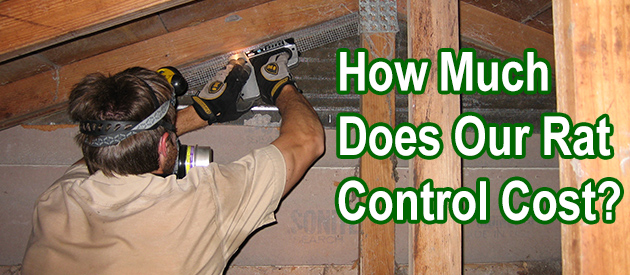Saint Louis County, St. Louis Rat Control Situation:
Hi David! I have a quick question that I'm hoping you can help me with. My husband and I are hearing noises in the attic and we noticed that the outside vent to the dryer has been pulled away from the house. We have some contraction going on in two rooms and after we put Sheetrock up, the next morning a hole was chewed where the ceiling meets the crawl space between the first and second floors. There were also rat droppings on the floor. We went out and bought snap traps (6) and set 2 in the room with the hole, one in the laundry room, 2 in the main attic, and one in the smaller attic above the room. The next morning half the traps were triggered but nothing caught. We reset all the traps and the next morning all the traps were triggered and empty. The rat had also gotten into the pantry during the night and found a bag of dog treats and tried to pull them out under the door. The reset all the traps, wrapping the trigger with gauze and coating it with peanut butter to make it harder for them to just lick it off. For three weeks now the traps have been untouched. We don't have much activity in the attic either. Last night I took some of the dog treats and put it with the peanut butter as added incentive and we finally caught one... A big one. My question is, is it likely that there are more or that we only had the one? We have two dogs inside and it boggles my mind that rats would be ballsy enough to roam the house when there are dogs around! Should I keep the traps out and see what happens or do you think we got it? Only the one trap with the rat was triggered. Thanks so much for your time, Zui in St. Louis MO
My response: If the traps were triggered with no trap, you were definitely using the wrong traps for the animal you were dealing with. So if it was definitely large rat traps that you were using, then you didn't have a rat - maybe an opossum or something. And if it was rat, then you used the wrong traps - did you you mouse traps, by chance?
St. Louis Rat Control Tip of The Week
Are Dogs Good at Keeping Rats Away?
Having rat problems automatically comes with the need to get rid of them. If you have a similar challenge in your home, chances are that you are already thinking about getting the natural enemy of rats to help keep them away. While cats seem to be the most commonly used animal when it comes to keeping rats away, dogs can also play a similar role and even do it better.
There is no denying the fact that cats are great at keeping rats away, but these animals are opportunistic hunters, which simply means that they only kill rats when they see one. Also, as they become older, they begin to develop a lackadaisical attitude towards the hunting and catching of rats.
But in the case of dogs, their hunting spirit becomes fiercer each passing day, and they can be quite aggressive hunters. Also, when dogs become familiar with you, they become territorial and will do everything possible to satisfy you. The moment the dog figures out that you want it to help keep rats away, it will work tirelessly to get this done and will always be on the lookout to catch a passing rat.
To take advantage of the supreme hunting skills of dogs, all you need to do is to get a breed of dog that is very active and train it to follow your commands. Once you can do that, the dog will help keep rats away from your home.


